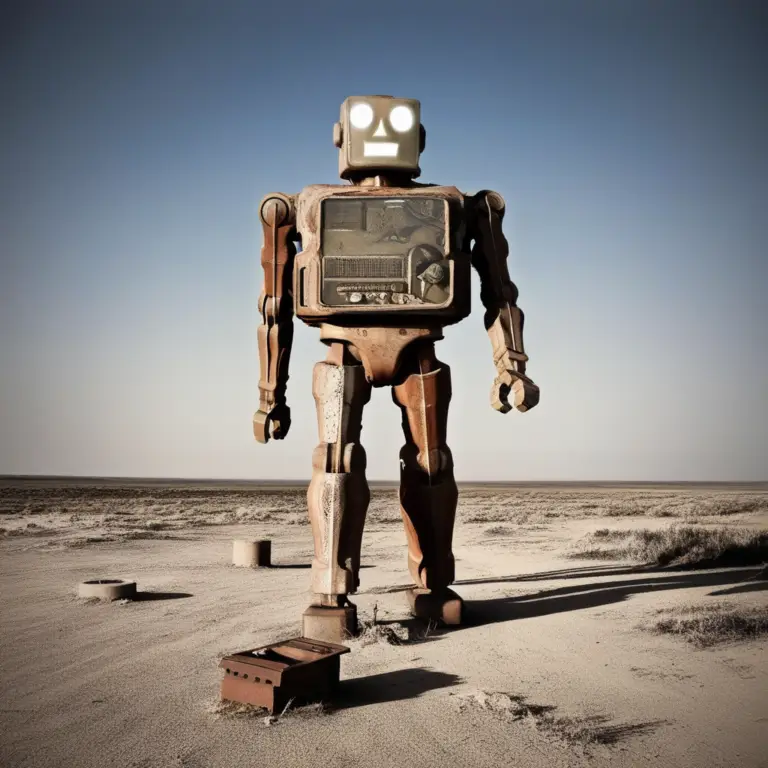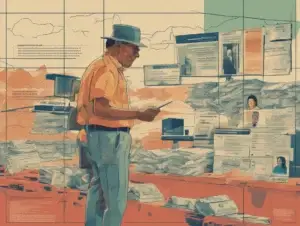When you hear “Artificial Intelligence” (or AI), you probably think of cutting-edge technology, self-driving cars, or maybe that helpful (or sometimes annoying) voice assistant on your phone. But do you know when we actually started talking about AI?
The term Artificial Intelligence was officially coined in 1956 by John McCarthy, a professor of mathematics at Dartmouth College. It was during the Dartmouth Conference, where he and his colleagues envisioned machines that could “think” and “learn” just like humans. This marked the formal beginning of AI as an academic and research field. But the idea of intelligent machines wasn’t born in 1956—it had been bouncing around in human imagination for centuries. So, let’s take a trip back in time to explore the fascinating origins of AI, and then look forward to how it’s evolved.

1. Talos: The OG Robot Protector (Ancient Greece)
Before we had the Turing Test, we had Talos, the giant bronze robot from ancient Greek mythology. Talos was a massive, automated guardian who protected the island of Crete. His job? To defend the island from invaders by circling it three times a day and hurling boulders at approaching ships. Talos was powered by divine ichor (think: ancient energy source) and was essentially a robot before robots existed.
In a way, Talos embodies the ancient world’s version of automated defense systems—a machine programmed to follow specific instructions. While the technology wasn’t there yet, the idea of a mechanical protector was something humans were already dreaming about.
2. Pygmalion and His Living Statue (Myth Meets AI)
Next up is Pygmalion, the original sculptor who might’ve taken his craft a little too seriously. According to myth, Pygmalion carved a statue so beautiful that he fell in love with it. And because ancient myths are never complete without some divine intervention, he asked the goddess Venus to bring his statue to life—and she did. The result? A statue-turned-human wife. Creepy? Maybe. A precursor to our obsession with creating lifelike, sentient beings? Definitely.
In essence, Pygmalion’s story reflects the age-old desire to bring the inanimate to life, much like our modern quest for sentient AI—machines that can learn, grow, and think as if they were alive.
3. Paracelsus and the Homunculus (Alchemy Gets Weird)
Let’s fast forward to the 16th century, where things get a little strange. Paracelsus, a Swiss alchemist, claimed to have discovered a way to create a homunculus, or a miniature human. His recipe? Mix human sperm with horse manure and let it ferment for 40 days. Yep, you read that right.
While this bizarre experiment sounds more like a failed science fair project than AI, Paracelsus’ obsession with creating life from non-life reflects the human desire to build something that can think and act on its own—a concept that would become a central theme in AI development centuries later.
4. Automata: The 18th Century’s Mechanical Marvels
Jumping to the 18th century, we enter the world of automata—mechanical devices designed to imitate human actions. These were essentially robots before robots, crafted by clockmakers and engineers to perform specific tasks, like playing music or writing letters. The most famous automaton, The Writer, built by Pierre Jaquet-Droz in 1770, could actually write out sentences with a quill, guided by a preset “program” of mechanical instructions.
While these machines weren’t “thinking” in any real sense, they were an important step toward the concept of programming machines to follow instructions, just like modern AI systems.
5. Alan Turing: The Father of Modern AI
The real turning point for AI came in the 20th century with Alan Turing, whose work laid the foundation for modern computing and AI. In 1950, Turing asked the now-famous question: “Can machines think?” His development of the Turing Test was designed to determine whether a machine could imitate human intelligence so well that a person wouldn’t be able to tell the difference.
Funny enough, during my studies at the University of Manchester, I spent a lot of time in the Turing Building, where Turing’s legacy looms large. His work was pivotal in shaping AI research, and his ideas about machines learning and solving problems are the bedrock of the AI we’re developing today.
6. The Birth of AI: John McCarthy and the Dartmouth Conference
Finally, in 1956, we arrive at the official beginning of AI as a field of study. At the Dartmouth Conference, John McCarthy coined the term Artificial Intelligence. This marked the point where the field of AI shifted from imaginative ideas to serious research, and the exploration of machines that could “think” began in earnest. Researchers like Marvin Minsky and Herbert Simon joined McCarthy in developing theories about how machines could learn, reason, and adapt.
7. First AI Applications: ELIZA and Early Programs
By the 1960s, AI moved from theory to real-world applications. One of the earliest examples was ELIZA, created in 1966 by Joseph Weizenbaum at MIT. ELIZA was a simple program that simulated a conversation by responding to user inputs with pre-programmed replies, mimicking a psychotherapist. While ELIZA wasn’t “thinking” in any human sense, it was one of the first glimpses of natural language processing—a foundational element of today’s AI-powered chatbots.
8. AI in the 21st Century: AI Everywhere
Fast forward to today, and AI is no longer a niche subject in research labs—it’s powering almost everything. From Siri and Alexa helping us organize our day, to Netflix predicting what we want to watch next, AI has become woven into the fabric of our everyday lives. AI is now driving innovations in healthcare, autonomous vehicles, and machine learning, where systems teach themselves based on data—helping industries scale, adapt, and grow at an unprecedented rate.
AI has gone from a theoretical discussion to a practical necessity, powering industries, shaping businesses, and even influencing the art we consume.
AI Has Been a Long Time Coming
So, there you have it! AI might feel like a futuristic, cutting-edge concept, but the idea of sentient machines has been around for thousands of years. From Talos to Pygmalion, from automata to Alan Turing, our fascination with creating thinking machines has a rich and strange history. And now, in the age of Siri, self-driving cars, and machine learning, AI is everywhere, transforming our world in ways we couldn’t have imagined just a few decades ago.
Stay tuned for my next article on AI’s greatest pop culture moments and how they shaped our modern understanding of AI!
Check out our article

El Mito Escondido en la Reforma del Seguro Social | CSS 06
Descubre los riesgos ocultos del sistema nocional propuesto en la Ley 163 y su impacto real

El Verdadero Costo de la Ley 163: ¿Qué Está en Juego? | CSS 05
Explora los riesgos del sistema nocional propuesto en la Ley 163 y su impacto en Panamá

¿Son Realmente Simples las Soluciones Populares? | CSS 04
Descubre por qué las soluciones populares para la Seguridad Social no son tan simples.

Historia del Seguro Social en Panamá que no está en Google | CSS 03
Historias de Las Reformas Pasadas y Dialogos de Seguridad Social

¿Qué es la Seguridad Social y por qué importa? | CSS 02
La Seguridad Social: Un pacto colectivo que protege en nuestros momentos más vulnerables.

La Mitología de la Seguridad Social Panameña | CSS 01
El Juega Vivo panameño: mitos, colores y lecciones políticas

One Response